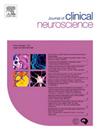脊柱盘炎的住院死亡率:通过全国住院病人抽样分析评估风险因素
IF 1.9
4区 医学
Q3 CLINICAL NEUROLOGY
引用次数: 0
摘要
本文章由计算机程序翻译,如有差异,请以英文原文为准。
In-Hospital mortality in Spondylodiscitis: Risk factors assessed through the National Inpatient Sample analysis
Objective
Spondylodiscitis (SD) poses an increasing challenge to healthcare providers by its insidious onset and diverse clinical manifestations, concurrent with an aging population, immunocompromising conditions and various influencing comorbidities. Overall mortality remains relatively high, up to 7.3%, despite advancements in diagnostics and treatment. Past studies have struggled to differentiate leading causes for mortality. With this study we want to utilize the large data group available through the National Inpatient Sample (NIS) to assess the in-hospital mortality in patients with SD in different age-groups and to identify risk factors.
Methods
Utilizing the 2020 NIS, Healthcare Utilization Project (HCUP) adults (>18 years) were screened using the primary diagnosis of SD by ICD-10 Code (M46.2x, M46.3x and M46.4x). Demographic information, admission details, clinical data, comorbidities, and surgical treatment were extracted using the Clinical Classifications Software Refined (CSSR) categories.
Comorbidities include pre-existing conditions and those acquired during hospitalization. Age was categorized into 3 groups (<65 years; 65–79: ≥ 80). The primary outcome was in-hospital mortality, with multivariable logistic regression analysis used to identify independent risk factors.
Results
In total 3,975 patients met our inclusion criteria resulting with an in-hospital mortality rate of 0.9 %. The mortality group was significantly older (70.86 years to 58.74 years compared to the survival group) with elective admission being more common (p=<0.001) with a similar sex distribution. Patients ages 65–79 were more common in the mortality group. Overall fourteen comorbidities differed significantly between the two groups. Chronic diseases were more common in the mortality group, whereas alcohol and substance abuse were more prevalent in the survival group. Age, especially patients < 65 years, elective admission status, paralysis and pneumonia were identified as independent risk factors for mortality.
Conclusion
Management of SD remains complex. Our study revealed a lower rate of in-hospital mortality and length of stay than previous studies. Elective admission status was the strongest predictor of mortality, highlighting the benefits of early diagnosis and treatment. Patients > 65 years, especially octogenarians, were identified to be particular at risk. Risk factors contributing to mortality in SD may differ from etiological risk factors, highlighting areas for potential further research.
求助全文
通过发布文献求助,成功后即可免费获取论文全文。
去求助
来源期刊

Journal of Clinical Neuroscience
医学-临床神经学
CiteScore
4.50
自引率
0.00%
发文量
402
审稿时长
40 days
期刊介绍:
This International journal, Journal of Clinical Neuroscience, publishes articles on clinical neurosurgery and neurology and the related neurosciences such as neuro-pathology, neuro-radiology, neuro-ophthalmology and neuro-physiology.
The journal has a broad International perspective, and emphasises the advances occurring in Asia, the Pacific Rim region, Europe and North America. The Journal acts as a focus for publication of major clinical and laboratory research, as well as publishing solicited manuscripts on specific subjects from experts, case reports and other information of interest to clinicians working in the clinical neurosciences.
 求助内容:
求助内容: 应助结果提醒方式:
应助结果提醒方式:


